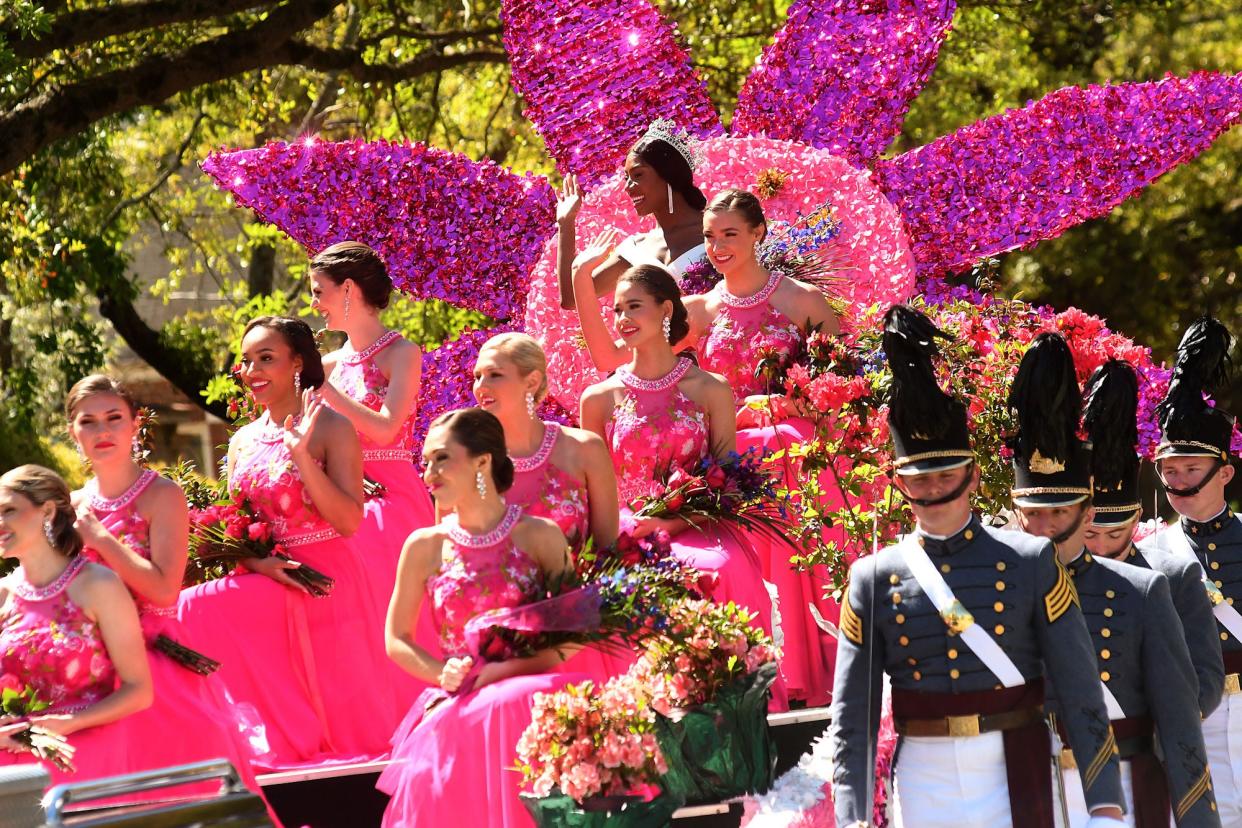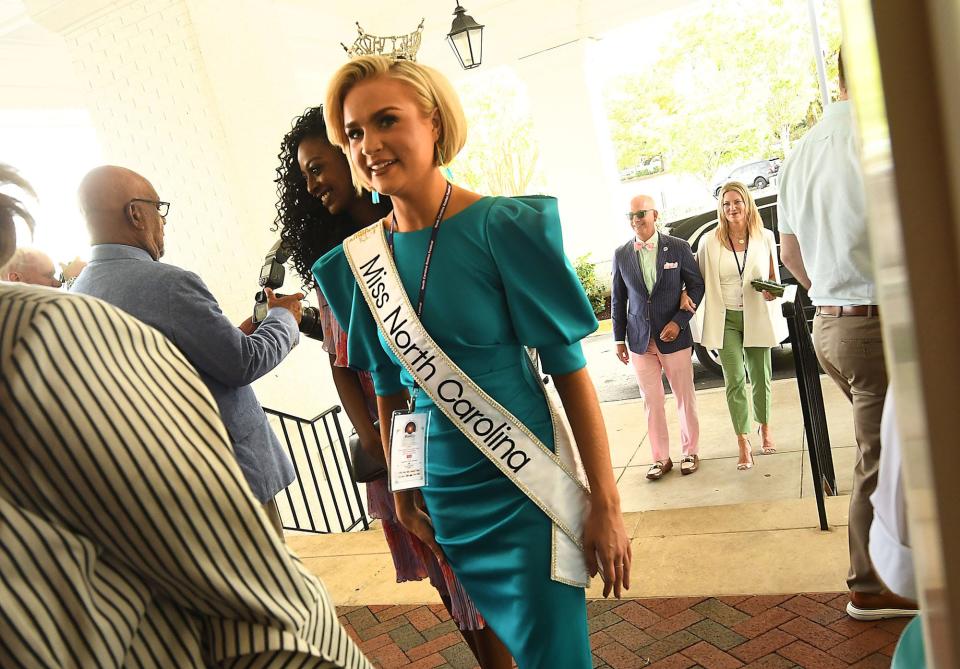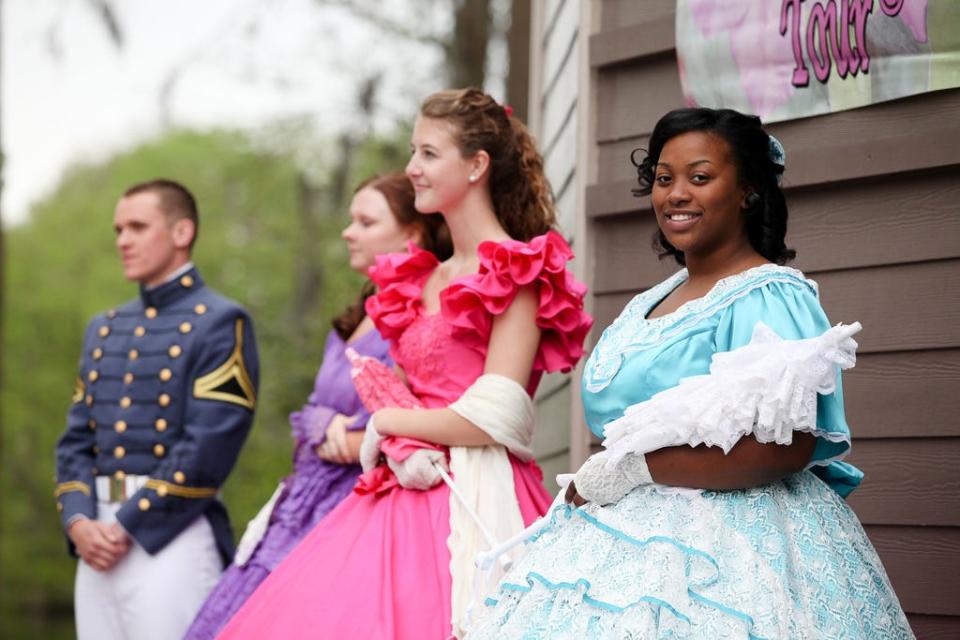Facing different challenges, how the Azalea Festival is adapting to a changing Wilmington

For the past three quarters of a century, April in Wilmington has meant the Azalea Festival.
Last year, the annual celebration of spring, community and the arts marked the 75th anniversary of its founding in 1948. This year, fully free of the COVID-induced restrictions that essentially canceled 2020's festival, forced major changes in 2021 and required a hastily planned affair last year, the Azalea Festival will finally be back to normal when Wilmington's biggest annual shindig returns April 12-16 with concerts, a street fair, a parade and more.
But what does "back to normal" mean for the festival in a community that has experienced massive growth in the past two decades, and in the last couple of years? Especially now as Wilmington has taken on a decidedly more cosmopolitan vibe since returning from COVID, a vibe that's a far cry from the festival's small-town origins.

One of the people charged with charting the festival's future is Alison Baringer, N.C. Azalea Festival executive director. Along with a five-member volunteer board of directors — the ladder-style board ensures a new president (this year, Denise Szaloky) each year who's had four years of board experience — Baringer and her staff plan the festival, from picking the queen and "invited guests" (aka festival celebrities) to booking the concert entertainment.
"It definitely has felt more normal this year," Baringer said during a phone interview. "We had one under our belts last year," she said, but with many of 2021's festival events having been held in August, "We only had six months to plan" the 2022 festival.
Baringer acknowledged the challenges that come with keeping the festival relevant as Wilmington grows. Many of the people currently moving to the area have never heard of the Azalea Festival, whereas in the past most people in town had grown up with it.
Baringer said that putting on an event as big as the Azalea Festival has always been challenging, it's just that now "the challenges are a little different." For example, the festival now gets its name out there by holding multiple events each year, like last month's Paws on Parade dog-celebrating event at Greenfield Lake or last week's first-ever Azalea Festival fashion show.
"We're just continually trying to add events," Baringer said, like this year's "Putt Putt Party" at Jungle Rapids, to see if they gain traction, while continuing to deliver on the events long-timers expect, like the parade and the street fair.
After a couple of years on downtown Wilmington's Northside due to construction in the central business district, for example, the street fair is back in its traditional home in the heart of downtown this year. Baringer said the festival surveyed area residents, business owners and others about the street fair, and "hands down everyone wanted to be back downtown."
Wilmington flashback: The famous faces and memorable moments in Azalea Festival history
Azalea cachet
There's also the matter of festival "cachet."
Back in the early days of the festival, even into the 2000s, the Azalea queen was often a well-known TV or soap opera actress. Festival celebrities, from future President Ronald Reagan to Michael Landon of "Bonanza" to "Diff'rent Strokes" star Todd Bridges, regularly came to town touting one TV show or another.
"What I've heard passed down, in the past we would work with local TV folks," Baringer said, looking to book various celebrities or potential queens from one network or another. "They would send in Phylicia Rashad (1985 queen) or Kelly Ripa (1993), people like that."
The ways that actors and the shows they appear on are promoted have changed in recent years.
"These days the stars have social media," Baringer said. "To ask people to take five days off work, when the festival doesn't generally pay them, that's asking a lot."

As a result, many recent festival queens and invited guests have had local connections. This year, there's World Series champion Trot Nixon, who grew up playing baseball in Wilmington. The 2023 Azalea Queen, Carli Batson, is a Wilmington native who grew up doing local theater before winning the Miss North Carolina pageant crown in 2021 and going on to compete for the Miss America title.
Last year's queen, Nia Franklin, is a former Miss America (as a number of recent queens have been), while 2021 queen Victoria Huggins and 2020 queen Anne Hawthorne both had ties to the area.
"With COVID, it's been helpful to have local people," Baringer said, noting that Huggins was available for festival events that were strung out between April and August in 2021.
"The board of directors, the staff, we talk a lot about" who the new queen will be each year, Baringer said. This year, in terms of the queen and invited guests like Wilmington twins Frances (of WECT) and Margaret Weller, festival president Szaloky "wanted to honor folks locally who've given back to the community," she said. "That was really important to her."
"In the future," Baringer added, the qualities the festival looks for in a queen "might change."
Embedding with community
As for why they continue to do the festival at all, aside from self-perpetuating tradition, Baringer is quick to point to a 2011 economic impact study conducted by the University of North Carolina Wilmington that estimated a $50 million economic impact for each festival. That number, she said, is almost certainly much larger in terms of 2023 dollars.
A significant portion of that financial impact comes from the festival's annual concert headliners, which for 2023 are country singer Carly Pearce (April 13) and folk rock/Americana act Old Crow Medicine Show (April 14), both at Live Oak Bank Pavilion.
In recent years the festival booked three major concerts annually, and offering up hip-hop and R&B performers such as Nelly, Snoop Dogg, Ice Cube, Jason Derulo and Cypress Hill, in addition to country and rock acts, helped the festival head off criticism that it has not always been sufficiently diverse in its concert bookings.
For 2023 "it was our goal from the beginning to do two concerts," Baringer said, while continuing last year's free Tunes and Blooms showcase of eight Wilmington musical acts at Greenfield Lake Amphitheater, a concert she said is built on "honoring our local entertainers."
This year's Tunes and Blooms show is set for noon to 8 p.m. Saturday, April 15. Wilmington musician Delia Stanley played the showcase last year and will return for 2023. She even gets to ride on a Tunes and Blooms float in the Azalea Festival Parade earlier that day.
The festival has "really been looking to highlight local bands and local music" with this event, Stanley said. "A big criticism in the past is that they didn't."
Last year, Stanley said, "My experience was fantastic. I brought my full band, played an hour to an hour and a half, originals fully encouraged ... To have that whole stage at Greenfield Lake to play on, it's pretty amazing."
One way the festival hopes to sustain itself, Baringer said, is by continuing to align itself and partner with various groups in the community.
This year, the Azalea Festival and Wilmington's Cucalorus Film Festival are partnering on an event for the first time, a screening of David Lynch's 1986 made-in-Wilmington cult classic "Blue Velvet" that sold out almost as soon as it was announced.
"I've been trying for five or 10 years to do something with (Cucalorus), something that keeps true to their brand and to our brand," Baringer said. She acknowledged that the edgy, noir-style drama "is not a film for everybody, but it's tied in directly to bringing all this filming into our region, and this was a way to honor that impact."
Special effects artist Jeff Goodwin, creator of the famed "Blue Velvet" severed ear, will be on hand for the screening, as will the owners of a house in Sunset Park featured in the movie.
Cucalorus director Dan Brawley said the timing of the "CucAzalea" team-up "had worked out really well with the expansion of Jengo's," the festival's headquarters and microcinema, which has been hosting near-weekly screenings thanks to recent renovations.
Much like the Azalea Festival, Brawley said Cucalorus is "trying to reach those new folks" who are moving here in droves.
As for the festival itself, "I think they've made some good changes," Brawley said. "It can be hard to convince a whole community to change the way they've done things for a long time. It can be emotional."

One such emotional change was driven not by the festival directly, but by one of the groups it works with, the Cape Fear Garden Club. In 2020, the Cape Fear Garden Club, which runs the annual Cape Fear Garden Club Azalea Garden Tour, announced it was discontinuing the "Azalea belle" program it had started in 1969 and replacing it with an "Azalea Ambassadors" program.
Dressed in colorful hoop skirts, the belles would appear at various festival events, not just on the garden tour. When the program was discontinued, some decried the move as a cancellation of tradition and history, while others applauded it, saying the belles in antebellum costumes evoked an era of the South's history when slavery was in effect.
While the festival has never addressed it publicly, past festivals had decidedly racist overtones. The cover of Margaret Mulrooney's 2018 book "Race, Place and Memory: Deep Currents in Wilmington, North Carolina," shows a picture of white "Kiwanis Minstrels" performing in blackface during the 1953 festival parade.
More Wilmington history: Cape Fear Unearthed podcast deals with Wilmington's troubled racial history
The festival has tried to make itself more inclusive in recent years, from booking Black concert headliners to having more Azalea queens of color.
From 1948 to 1984, the festival had no queens of color. Phylicia Rashad broke the Azalea queen color barrier in 1985, but nearly two more decades would pass until the festival would have another Black queen, Dari Alexander, in 2004. Since then, five of 19 Azalea queens have been women of color, plus one, Briana Venskus in 2019, who identified as LGBTQ.
Azalea future
As the festival continues to evolve along with Wilmington, its success will likely hinge on how well it reflects, and thus appeals to, its community.
Another group the festival partners with, the Historic Wilmington Foundation, which hosts the Azalea Festival Home Tour, is moving into uncharted waters this year by having its tour in the Sunset Park neighborhood for the first time.
"When you say historic district, people think downtown by the river," said Travis Gilbert, director of the Historic Wilmington Foundation. "This year presents the largest change the tour has seen."

Not only was moving the tour to Sunset Park this year a way to make things fresh and new, Gilbert said, but it highlights the fact that Sunset Park is one of eight historic districts in Wilmington listed on the National Register of Historic Places.
By broadening the definition of what a historic district is, Gilbert said, his group can "use the platform of the festival" to reach more people while furthering the mission of historic preservation.
It's these types of synergies with such groups as Historic Wilmington and Cucalorus, and even with local musicians, Baringer said, that she hopes will give the Azalea Festival a steady footing with the community as it moves into the future.
This article originally appeared on Wilmington StarNews: As Wilmington grows, the NC Azalea Festival evolves into the future
